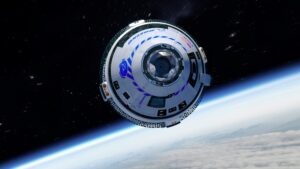17, NASA and Boeing said the Orbital Flight Test (OFT) 2 launch, previously scheduled for March 25, is now planned for no earlier than April 2. The spacecraft will launch on a United Launch Alliance Atlas 5 from Cape Canaveral, Florida.
The revised date comes after Boeing recently replaced avionics units on the vehicle that were damaged by a power surge that NASA said was caused by “a ground support equipment configuration issue during final checkouts” of the spacecraft.
The company is also still working to complete testing of software on the spacecraft, addressing one of the key issues with the first OFT mission in December 2019. NASA said that teams have completed about 95% of the recommendations identified by an independent review of that mission nearly a year ago, which focused primarily on software.
One of the last milestones before launch is a complete “end-to-end mission rehearsal” that features the same software that will be used on the Starliner spacecraft as well as “high-fidelity” flight hardware. The lack of complete mission simulations was one reason software problems, like an incorrectly set mission timer on the spacecraft, were not detected before the OFT mission.
“The Boeing and NASA teamwork on all aspects of flight preparation including final certification, hazard analysis and software testing is extraordinary,” Steve Stich, manager of NASA’s commercial crew program, said in a statement. “Even though this uncrewed flight test to the International Space Station is a key milestone on the path to the first Starliner crewed mission planned for later this year, we will fly when we are ready.”
“We’re fully engaged in the agency’s review process as a valuable investment of our time to ensure confidence in the spacecraft,” added John Vollmer, vice president and program manager for Starliner at Boeing.
Another complicating factor for mission preparations is record-breaking winter weather in Houston, which led to widespread power outages, Boeing said in its statement. “Despite this, the team remains focused on the safety and quality of the spacecraft and a successful launch no earlier than April 2,” the company said.
The OFT-2 mission, which includes a docking with the International Space Station, will start what will be an active month on the station. A Soyuz mission is scheduled to launch to the ISS April 10, and was to carry three Russian cosmonauts. However, NASA revealed Feb. 9 that it’s seeking to obtain one of the three seats on that spacecraft for an astronaut in exchange for “in-kind services” rather than purchasing it.
SpaceX is scheduled to fly its next Crew Dragon mission, Crew-2, no earlier than April 20. That spacecraft will bring a new crew of American, European and Japanese astronauts to the station, allowing the astronauts currently on the station from the Crew-1 mission to return home by early May.



